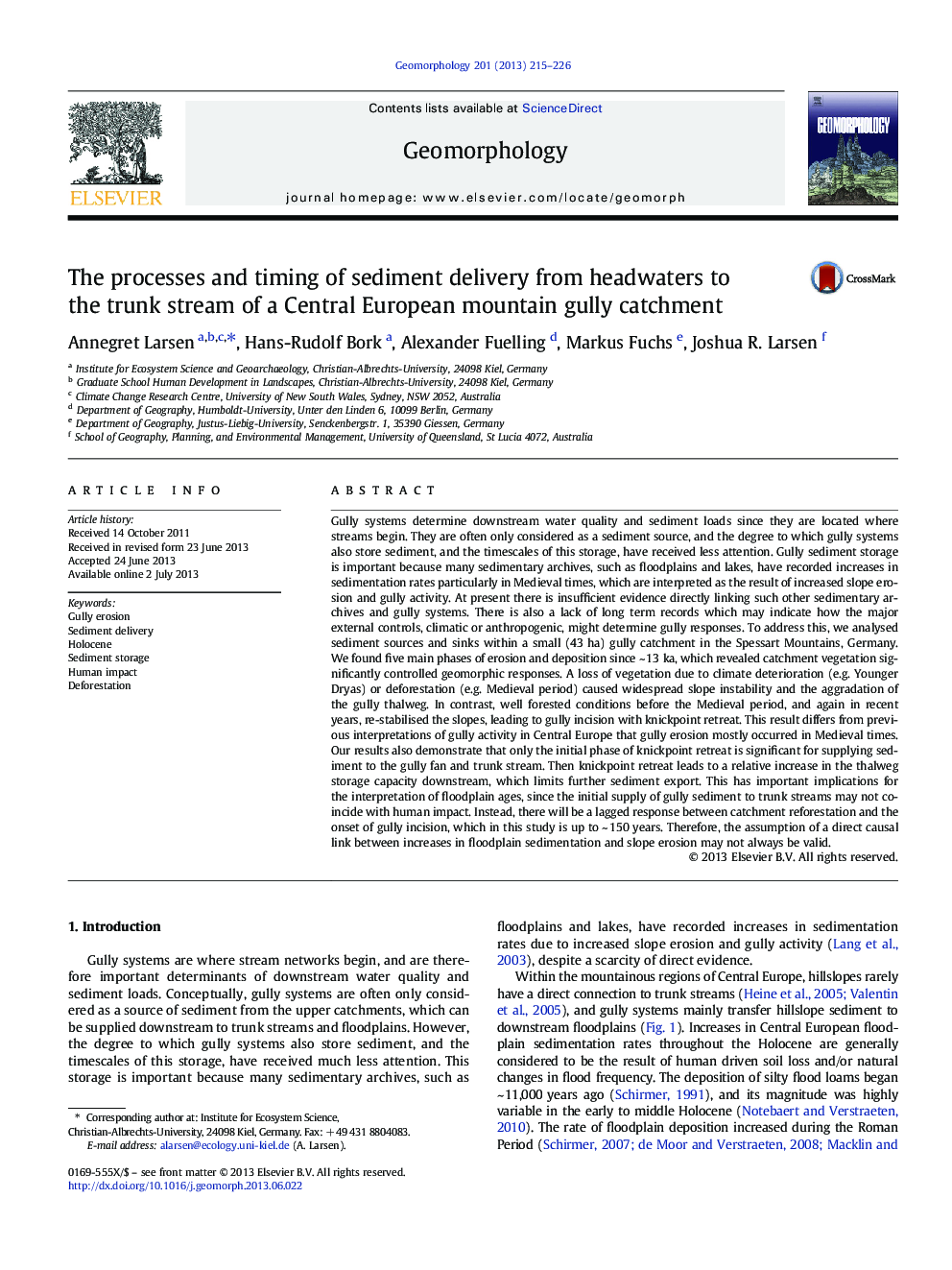| کد مقاله | کد نشریه | سال انتشار | مقاله انگلیسی | نسخه تمام متن |
|---|---|---|---|---|
| 6432653 | 1635448 | 2013 | 12 صفحه PDF | دانلود رایگان |
- Sediment sources and sinks of a small gully catchment in central Europe are analysed.
- Vegetation loss or gain due to climate or humans drives slope erosion or stability.
- Gully thalweg aggradation limits sediment export to trunk stream during human impact.
- Stable slopes promote knickpoint retreat and deliver sediment to trunk stream.
- Implications for interpretation of floodplain sedimentation rates due to time lag
Gully systems determine downstream water quality and sediment loads since they are located where streams begin. They are often only considered as a sediment source, and the degree to which gully systems also store sediment, and the timescales of this storage, have received less attention. Gully sediment storage is important because many sedimentary archives, such as floodplains and lakes, have recorded increases in sedimentation rates particularly in Medieval times, which are interpreted as the result of increased slope erosion and gully activity. At present there is insufficient evidence directly linking such other sedimentary archives and gully systems. There is also a lack of long term records which may indicate how the major external controls, climatic or anthropogenic, might determine gully responses. To address this, we analysed sediment sources and sinks within a small (43Â ha) gully catchment in the Spessart Mountains, Germany. We found five main phases of erosion and deposition since ~Â 13Â ka, which revealed catchment vegetation significantly controlled geomorphic responses. A loss of vegetation due to climate deterioration (e.g. Younger Dryas) or deforestation (e.g. Medieval period) caused widespread slope instability and the aggradation of the gully thalweg. In contrast, well forested conditions before the Medieval period, and again in recent years, re-stabilised the slopes, leading to gully incision with knickpoint retreat. This result differs from previous interpretations of gully activity in Central Europe that gully erosion mostly occurred in Medieval times. Our results also demonstrate that only the initial phase of knickpoint retreat is significant for supplying sediment to the gully fan and trunk stream. Then knickpoint retreat leads to a relative increase in the thalweg storage capacity downstream, which limits further sediment export. This has important implications for the interpretation of floodplain ages, since the initial supply of gully sediment to trunk streams may not coincide with human impact. Instead, there will be a lagged response between catchment reforestation and the onset of gully incision, which in this study is up to ~Â 150Â years. Therefore, the assumption of a direct causal link between increases in floodplain sedimentation and slope erosion may not always be valid.
Journal: Geomorphology - Volume 201, 1 November 2013, Pages 215-226
